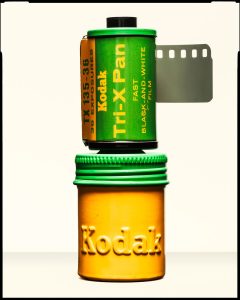
Today marks the 65th Anniversary of the release of Kodak Tri-X black and white film, in 35mm, 120, and 620 roll film formats. Tri-X was a film that at the time of it’s release was one of the fastest black and white emulsions ever made, and allowed photographers to take their cameras into more low light situations, capturing concerts, dark alleys, and dimly lit restaurants than ever before.
Originally released in 1940 in sheet film only, it was rated at a speed of 200. In the 1960s, the ASA standard was revised, increasing the speed to 400. The film has gone a number of revisions, most recently in 2007 when it was re-designated 400TX with a much finer grain than earlier versions.
It’s unlikely if you’ve been shooting film for any length of time to have never come across Tri-X as 65 years is quite a long time for anything to be in production. Tri-X has also managed to stave off being discontinued as film usage dropped in the early 21th century, surviving where films like Kodak Plus-X, Fuji Neopan, and AGFAPan did not.
To celebrate this occasion, I have not one, not two or three, but four articles all from 1950s and 1960s when it was a new film. The first, from the December 1954 issue of Popular Photography was one of the first looks by a mainstream publication of the new film and compares it to Kodak’s own Super-XX and Ilford HP-3.
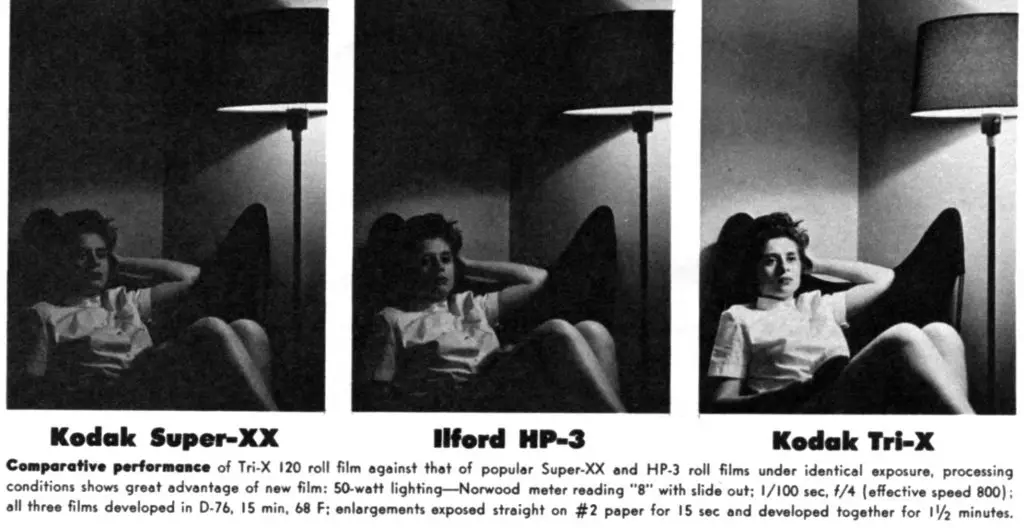
This first article is quite interesting as the editors were given very little technical information about how to shoot the film, how it should be exposed and how it should be developed. The unnamed photographers had to “wing it” hoping to make the most out of what was foreign territory at the time. Whether this omission of technical info was intentional or not, in hindsight, it worked out well for Kodak as the excellent images spoke to the flexibility of film that great images were attained without a lot of preparation. Flexibility and latitude is something that over the years, we’ve come to expect, especially from black and white emulsions, but back in the 1950s, this wasn’t always the case.
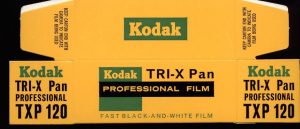 I won’t spend a lot of time rehashing what’s in this article as it’s a great read. If only to see what the thoughts were at a time when shooting high speed black and white film was not common. Read the 6 page article in it’s entirety below in PDF format. Keep scrolling to the bottom of the article to see the remaining three other articles I was able to dig up.
I won’t spend a lot of time rehashing what’s in this article as it’s a great read. If only to see what the thoughts were at a time when shooting high speed black and white film was not common. Read the 6 page article in it’s entirety below in PDF format. Keep scrolling to the bottom of the article to see the remaining three other articles I was able to dig up.
Next, is a 4 page article from the January 1955 issue of Modern Photography, who like in the previous article, compare Tri-X to Kodak Super-XX. The MOdern test seems to be more clinical of the film and comically makes a declaration of:
We don’t think it’s to be employed as a general purpose film. It’s just too darned fast to handle easily in bright sunlight unless you have a camera with speeds of 1/1000 or more and a lens giving extremely good definition when stopped down to or past f/22.
Ha! Imagine that! A time when a camera with a 1/1000 speed shutter was a requirement to shoot Tri-X as a general purpose film. Still, it’s an interesting alternative view from nearly 65 years ago.
Finally, I have two short pieces, the first from the January 1965 issue if Popular Photography offering suggestions on getting the most from Tri-X, and the second from January 1966 comparing it to Ilford’s new HP4 film that was developed specifically to compete with Tri-X.
All scans used with permission by Marc Bergman, 2019.

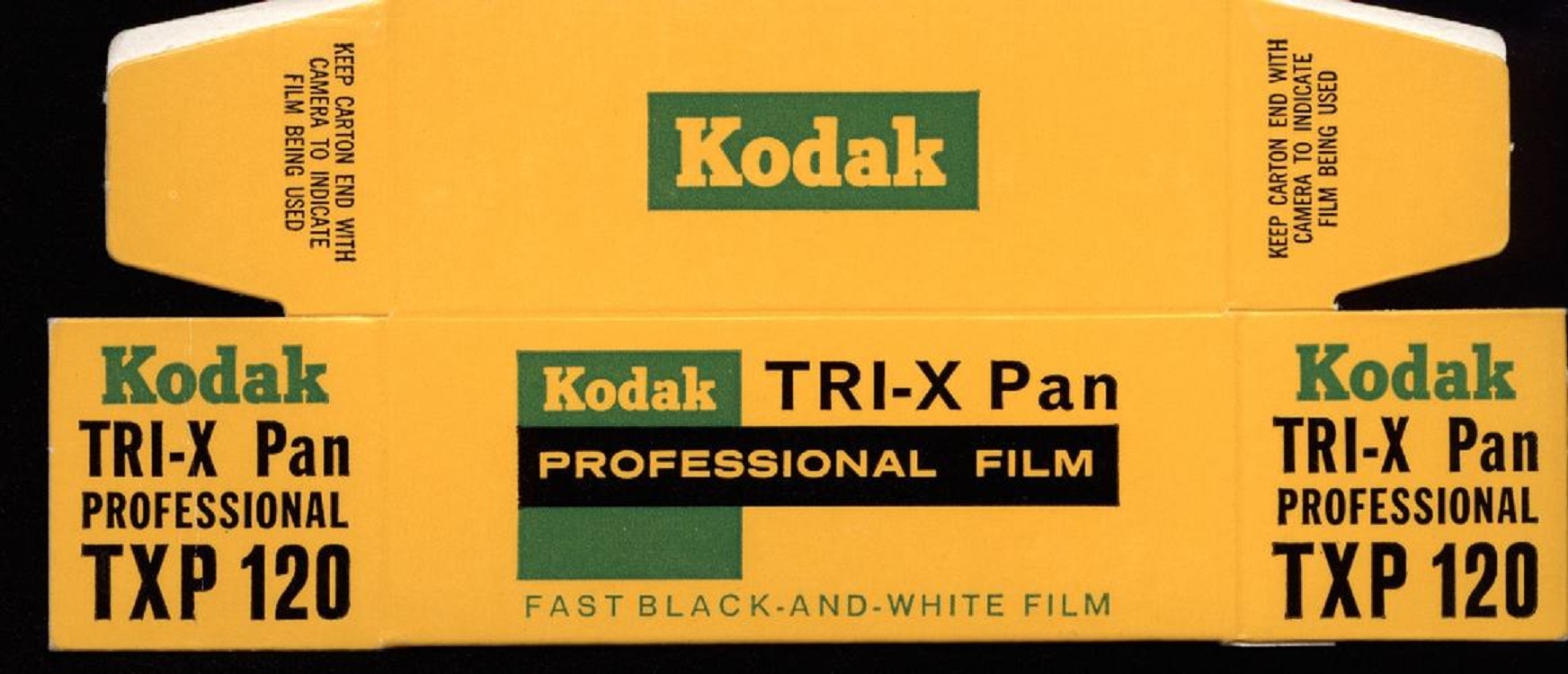
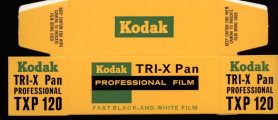
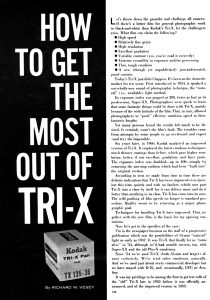

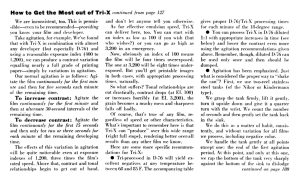

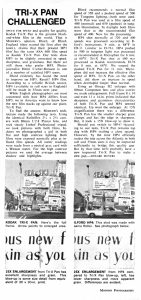
Great post!
Interesting to remember (as I can) when there were a lot of articles in the photo magazines about how to get MORE depth-of-field.
Tri-X helped a lot with that.
Very interesting post. I lived on an “available dark” diet of Tri-X at ASA 1200 developed in Acufine for nearly two decades, before I finally learned to appreciate finer grain and better lighting as ingredients of good photos. Thanks for retelling this story, Mike.
I’ve never pushed Tri-X to anything other than box speed, but it sounds like something I’ll have to try. Normally, Im a fan of less grain, not more, but under the right circumstances, it can give great effect!
Back in the 1960s, Tri-X was a miracle film for me: fast, sharp, great grain, and very flexible with developers (D-76 or Acufine). I must have shot hundreds of rolls of it. Today’s TMax 400 is even better.